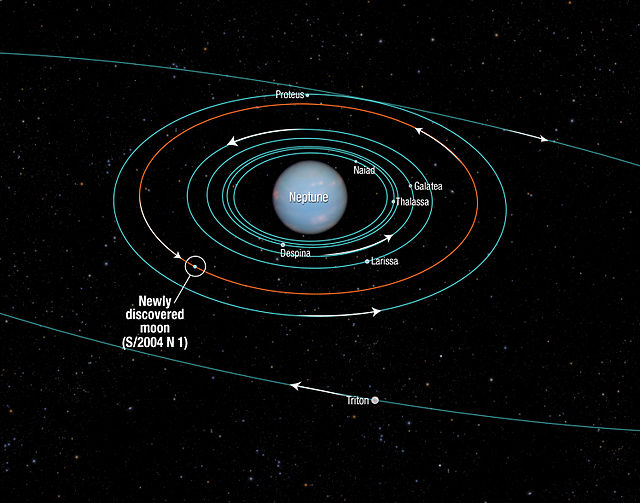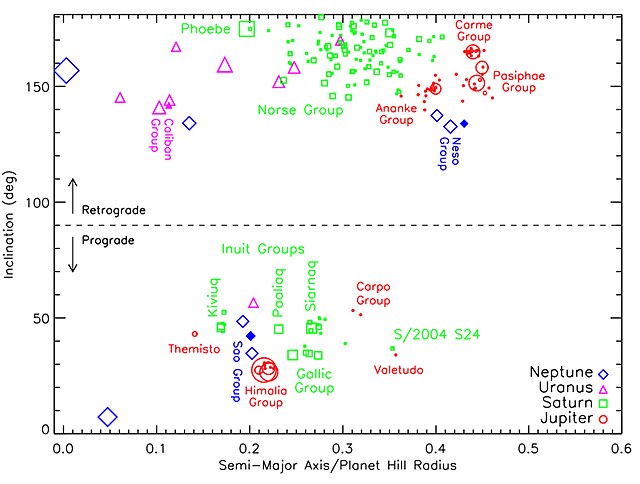Psamathe, also known as Neptune X, is a retrograde irregular satellite of Neptune. It is named after Psamathe, one of the Nereids. Psamathe was discovered by Scott S. Sheppard and David C. Jewitt in 2003 using the 8.2 meter Subaru telescope. Before it was officially named on February 3, 2007, it was known by the provisional designation S/2003 N 1.
Discovery images of Psamathe by the Subaru Telescope in 2003
The planet Neptune has 16 known moons, which are named for minor water deities and a water creature in Greek mythology. By far the largest of them is Triton, discovered by William Lassell on October 10, 1846, 17 days after the discovery of Neptune itself. Over a century passed before the discovery of the second natural satellite, Nereid, in 1949, and another 40 years passed before Proteus, Neptune's second-largest moon, was discovered in 1989.
Orbit diagram of Neptune's inner moons including Triton, with their names and orbit directions indicated
Size comparison of Neptune's seven inner moons
Irregular satellites of Jupiter (red), Saturn (green), Uranus (magenta) and Neptune (blue; including Triton), plotted by distance from their planet (semi-major axis) in the horizontal axis and orbital inclination in the vertical axis. The semi-major axis values are expressed as a fraction of the planet's Hill sphere's radius, while the inclination is expressed in degrees from the ecliptic. The relative sizes of moons are indicated by the size of their symbols, and the Sao and Neso groups of Neptunian moons are labeled. Data as of February 2024.




